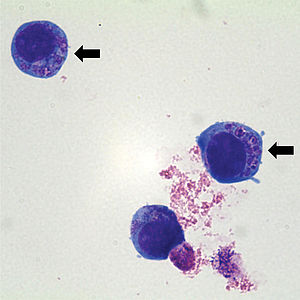Human granulocytic anaplasmosis (HGA) is a tick-borne, infectious disease caused by Anaplasma phagocytophilum, an obligate intracellular bacterium that is typically transmitted to humans by ticks of the Ixodes ricinusspecies complex, including Ixodes scapularis and Ixodes pacificus in North America. These ticks also transmit Lyme disease and other tick-borne diseases.[3]
The bacteria infect white blood cells called neutrophils, causing changes in gene expression that prolong the life of these otherwise short-lived cells.[4]
| Human granulocytic anaplasmosis | |
|---|---|
| Other names | Human granulocytic ehrlichiosis (HGE)[1][2] |
 | |
| Anaplasma phagocytophilum cultured in human | |
| Specialty | Infectious disease |
https://en.wikipedia.org/wiki/Human_granulocytic_anaplasmosis
No comments:
Post a Comment